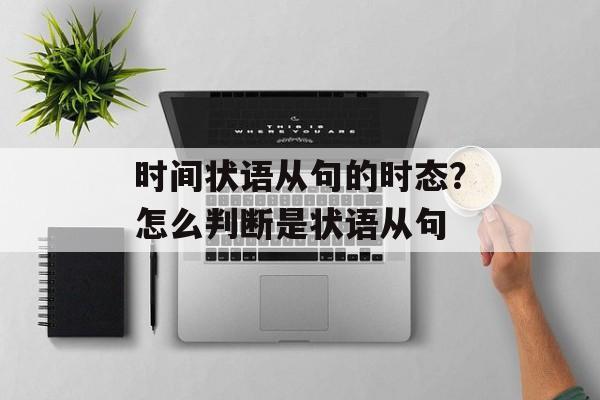大家好,关于时间状语从句的时态很多朋友都还不太明白,今天小编就来为大家分享关于怎么判断是状语从句的知识,希望对各位有所帮助!
本文目录
一、时间状语从句的时态规则
1、时间状语从句是指在主句中描述某个事件发生的时间时,通过从句来表示这个事件发生的时间或时间段。在使用时间状语从句时,需要注意时态的使用。
2、一般情况下,当时间状语从句所描述的时间是现在或未来时,从句中的时态应该与主句一致,即用一般现在时或将来时。例如,当主句是“I will go to the cinema tomorrow”时,时间状语从句应该使用将来时,即“when the cinema opens”.
3、当时间状语从句所描述的时间是过去时,从句中的时态则需要根据具体情况而定。如果主句中的动词已经使用了过去时,那么从句中的时态应该使用过去完成时。例如,当主句是“I had already finished my homework when my friend arrived”时,时间状语从句应该使用过去完成时,即“my friend arrived”.
4、如果主句中的动词是一般现在时或将来时,那么从句中的时态应该使用过去时。例如,当主句是“I will meet him when he arrived”时,时间状语从句应该使用过去时,即“when he arrived'.
5、需要注意的是,当主句和从句所描述的时间不一致时,从句中的时态也需要根据具体情况而定。例如,当主句是“I wish I could go back to last summer”时,时间状语从句中需要使用过去时,即“when I was on vacation”.
6、总之,在使用时间状语从句时,需要根据主句和从句所描述的时间来确定时态的使用。正确使用时态可以使句子更加准确、清晰,让读者更加容易理解句子的意思。
二、状语从句的时态
1、一、如果主句是将来时或表示将来含义时,那么条件和时间状语从句多用一般现在时
2、如: When I grow up, I will be a nurse and look after patients/ I want to be a nurse and look after patients.
3、我长大后要当一名护士,照顾病人。
4、二、如果主句是祈使句,那么从句通常要用一般现在时
5、如:Don’t laugh at me when I make a mistake.
6、三、如果主句是含有情态动词的一般现在时,根据需要从句多用一般现在时
7、如:You should be quiet when you are in the reading room
8、分别主句与从句:简单而言主句就是问题的中心所在。一个句子的中心意思体现在主句中。所以判断主从关系要从意思入手。
9、或者根据引导词来看,引导词的后面是从句。定语从句主要修饰名词与代词.主要关系词有;who whom whose which that when where why表语从句置于连系动词后面做表语。
10、时间状语从句 when, whenever, while, as, before, after, since, till, once, as soon as,etc.
11、原因状语从句 because, since, as, for, now that, etc.
12、目的状语从句 in order that, so that, that, etc.
13、结果状语从句 so…that, so that, such…that, that, etc.

14、条件状语从句 if, unless, as(so)long as, etc.
15、让步状语从句 though, although, even if, even though, however, whatever, as,etc.
16、比较状语从句 as…as, so…as, than, etc.
17、方式状语从句 as, as if, as though, etc.
18、条件状语从句中,如果主句是一般将来时,从句要用一般现在时
19、参考资料来源:百度百科-主将从现
三、时间状语从句用什么时态
1、由when引导的时间状语从句,主句用过去进行时,从句用一般过去时。如:
He didn’t tell me when we should meet again.他没有告诉我什么时候我们能再见面。
When he was still a little boy,Jack London wrote some compositions which were praised by his teachers.杰克·伦敦还是小孩时,他写的一些作文就受到老师的赞赏。
2、while通常用在事情同时发生的情况,主句和从句都用过去进行时。如:
Mother was cooking the meal while i was doing my homework。我做作业时,妈妈正在做饭。
She got married while she was working as a waitress。她在饭店当服务生期间结婚了。
1、主句是一般现在时,从句时态不变。
He says(that) he will leave a message on my desk.他说他将在我桌上留言。
They know(that) he is working hard.他们知道他在努力工作。
2、主句是一般过去时,从句为各种相应过去时态。
He answered that he was listening to me.他回答说他在听我说话。
3、主句是一般将来时,一般从句为一般现在时(“主将从现”)。
4、当从句所叙述的事实为一个定理或客观存在时,无论主句是什么时态,从句均用一般现在时。但与人有关的均不是定理。
He told me that he was a boy.他告诉我他是个男孩。
(虽然性别是客观存在的,但“男”“女”也是人为定义的,故非第4种情况)
Father told me that practice makes perfect.父亲告诉我,熟能生巧。
(所叙述的事实为一个定理,用一般现在时)
四、时间状语从句的时态有要求吗
1、by the time+句子,要用对应的完成时态。比如by now,后面用现在完成时,by the time he finished his homework,用过去完成时
2、hardly...when/ no sooner...than...都是表示一...就...前面半句用过去完成时,后面用一般过去式
3、 it has been/is+时间段+since句子(过去式)
4、It will be/is+时间段+before句子(现在时)
5、It was+时间段+before句子(过去式)
6、when,while,as引导时间状语从句的区别
7、when,while,as显然都可以引导时间状语从句,但用法区别非常大。
8、一、when可以和延续性动词连用,也可以和短暂性动词连用;而while和as只能和延续性动词连用。
9、① Why do you want a new job when youve got such a good one already?(get为短暂性动词)你已经找到如此好的工作,为何还想再找新的?
10、②Sorry,I was out when you called me.(call为短暂性动词)对不起,你打 *** 时我刚好外出了。
11、③Strike while the iron is hot.(is为延续性动词,表示一种持续的状态)趁热打铁。
12、④ The students took notes as they listened.(listen为延续性动词)学生们边听课边做笔记。
13、二、when从句的谓语动词可以在主句谓语动作之前、之后或同时发生;while和as从句的谓语动作必须是和主句谓语动作同时发生。
14、1.从句动作在主句动作前发生,只用 when。
15、①When he had finished his homework,he took a short rest.(finished先发生)当他完成作业后,他休息了一会儿。
16、②When I got to the airport,the guests had left.(got to后发生)当我赶到飞机场时,客人们已经离开了。
17、2.从句动作和主句动作同时发生,且从句动作为延续性动词时,when,while,as都可使用。
18、①When/While/As we were dancing,a stranger came in.(dance为延续性动词)当我们跳舞时,一位陌生人走了进来。
19、②When/While/As she was making a phonecall,I was writing a letter.(make为延续性动词)当她在打 *** 时,我正在写信。
20、3.当主句、从句动作同时进行,从句动作的时间概念淡化,而主要表示主句动作发生的背景或条件时,只能用 as。这时,as常表示“随着……”;“一边……,一边……”之意。
21、① As the time went on,the weather got worse.(as表示“随着……”之意)
22、② The atmosphere gets thinner and thinner as the height increases.随着高度的增加,大气越来越稀薄。
23、③As years go by,China is getting stronger and richer.随着时间一年一年过去,中国变得越来越富强了。
24、④The little girls sang as they went.小姑娘们一边走,一边唱。
25、⑤The sad mother sat on the roadside,shouting as she was crying.伤心的妈妈坐在路边,边哭边叫。
26、4.在将来时从句中,常用when,且从句须用一般时代替将来时。
27、①You shall borrow the book when I have finished reading it.在我读完这本书后,你可以借阅。
28、②When the manager comes here for a visit next week,Ill talk with him about this.下周,经理来这参观时,我会和他谈谈此事。
29、三、when用于表示“一……就……”的句型中(指过去的事情)。
30、 *** .had hardly(=scarcely) done sth.when...=Hardly/ Scarcely had *** .done sth.when...
31、①I had hardly/scarcely closed my eyes when someone knocked at the door.=Hardly/ Scarcely had I closed my eyes when someone knocked at the door.我刚一闭上眼,就有人在敲门了。
32、②I had hardly/scarcely entered my room when the telephone rang.=Hardly/Scarcely had I entered my room when the telephone rang.我刚一走进房门, *** 就响了。
关于时间状语从句的时态,怎么判断是状语从句的介绍到此结束,希望对大家有所帮助。







